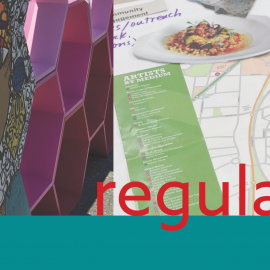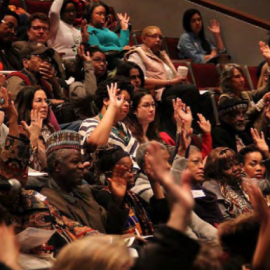Socially Engaged Art and Civic Art Practices OVERVIEW Since the 1960’s a proliferation of practices have been born into being that describe different ways of improving physical places through social interventions. The wealth of words like placemaking, placekeeping, public design,
Cultural Facilities
This Page is Under Construction Come back soon!
Public Art
Public Art OVERVIEW Public art is any type of art intended for public spaces or the public realm. It is typically created by artists who “endeavor to generate dialogue with the community, at times about the issues central to their
Percent for Art
What is Percent-for-Art? OVERVIEW Percent-for-art programs allocate a small portion of capital construction or renovation budgets (usually one percent) for the purchase, commissioning, and installation of artworks. Percent for art programs are one effective way for states and territories to
Artist Residencies
Artist Residencies OVERVIEW Governmental and cultural entities may embed artists within their organizations in order to explore new ideas and ways of working. In this context artists often function as social practitioners, combining the traditional roles of an artist, community organizer,
Tactical Urbanism
Tactical Urbanism OVERVIEW Tactical urbanism refers to the approach of implementing short-term, low-cost, and scalable demonstration projects that test alternatives to infrastructure, design, and uses in the public realm. This term was coined by planner Mike Lydon and is grounded
Cultural Asset Mapping
What is Cultural Asset Mapping? OVERVIEW Cultural asset mapping is a foundational step in cultural planning. It rests in the belief that there are valuable assets – in the form of people, places, associations and organizations – and that recognizing, counting,

